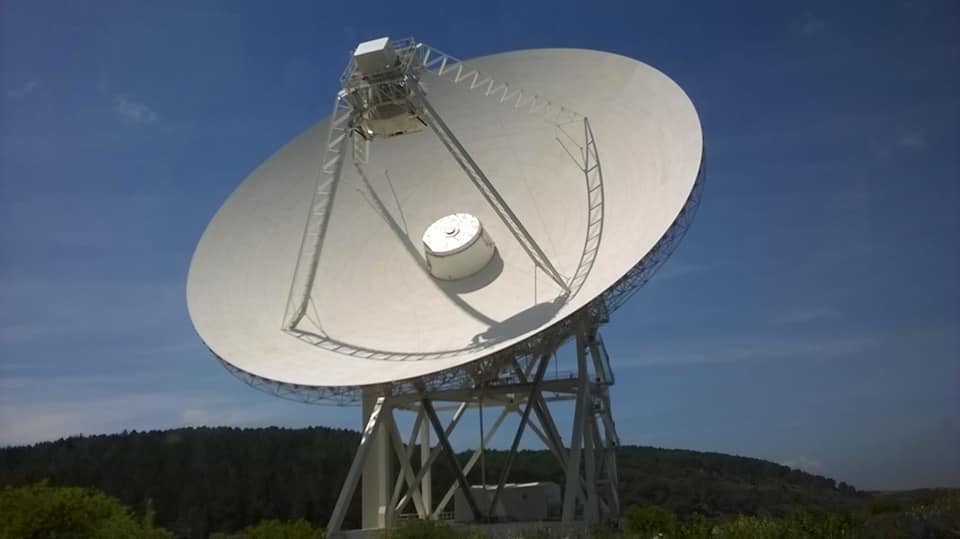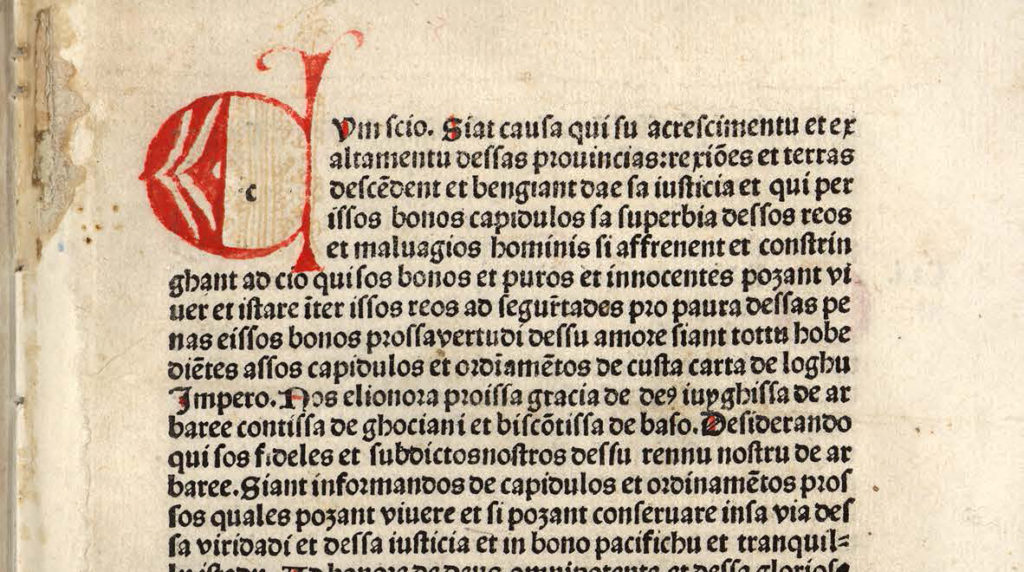
Historical Fiction/fantasy/horror self-pub author🖊️ Medieval History ❤ Sardinian writing of Sardinians 🌊 {🇮🇹🇬🇧🇪🇸}
How to get URL link on X (Twitter) App


 Oral tradition in Sardinia has always been a strong component of the conservation of memory. Most people were illiterate, but they could still create poetry. This is a particular characteristic of shepherds, which also relates to the traditional singing technique.
Oral tradition in Sardinia has always been a strong component of the conservation of memory. Most people were illiterate, but they could still create poetry. This is a particular characteristic of shepherds, which also relates to the traditional singing technique.

 Antiochus was born in North Africa and was likely a doctor. He was raised in the Christian faith, in a period in which Romans still persecuted Christians. The hagiography says he was pretty vocal about his faith and for this reason the Roman governors tried to kill him, -
Antiochus was born in North Africa and was likely a doctor. He was raised in the Christian faith, in a period in which Romans still persecuted Christians. The hagiography says he was pretty vocal about his faith and for this reason the Roman governors tried to kill him, - 


 Nora is located in the South Sardinia, today in the municipality of Pula, at close distance from Cagliari. It is famous for being the site of the martyrdom of Sant'Efisio and back in the day, it was probably even more important than Karales (Cagliari).
Nora is located in the South Sardinia, today in the municipality of Pula, at close distance from Cagliari. It is famous for being the site of the martyrdom of Sant'Efisio and back in the day, it was probably even more important than Karales (Cagliari).

 As you might know by now, the main setting is Cuglieri, a village in the Montiferru. Today is the 1st anniversary of the fire that burned down large part of the forest and destroyed the millennial oleaster. Exactly one year ago, I was preparing to begin-
As you might know by now, the main setting is Cuglieri, a village in the Montiferru. Today is the 1st anniversary of the fire that burned down large part of the forest and destroyed the millennial oleaster. Exactly one year ago, I was preparing to begin-https://twitter.com/DrWatson_writer/status/1418999163736543233?t=4pIS3itZoqTi7FV56tUsXw&s=19

 Sardinia had a different medieval history than the rest of Europe. By the 1000s, we had 4 different kingdoms, likely born from the division of an original single entity. The subdivision meant also a different kind of local administration. Differently than the rest of Europe, -
Sardinia had a different medieval history than the rest of Europe. By the 1000s, we had 4 different kingdoms, likely born from the division of an original single entity. The subdivision meant also a different kind of local administration. Differently than the rest of Europe, -

 The events took place in 1911. In the attempt to update the means of transportation, in Itri, a village between Lazio and Campania in the Italian peninsula, people were building a new railway in order to join north and south. Many Sardinian workers were hired to work on the -
The events took place in 1911. In the attempt to update the means of transportation, in Itri, a village between Lazio and Campania in the Italian peninsula, people were building a new railway in order to join north and south. Many Sardinian workers were hired to work on the -

 When the Catalan-Aragonese started their conquest of Sardinia, they brought with them important figures from many Iberian noble families. In order to guarantee their fealty, the king assigned them fiefdoms in the conquered territories, initiating the feudal system in the Island.
When the Catalan-Aragonese started their conquest of Sardinia, they brought with them important figures from many Iberian noble families. In order to guarantee their fealty, the king assigned them fiefdoms in the conquered territories, initiating the feudal system in the Island.

 First and foremost, it must be clear that anything relating to Sardinian culture depends on the geographical area, since coastal areas were closer to outside influences. Also, since Middle Age, Sardinia saw the opposite situations of commoners and noble classes,-
First and foremost, it must be clear that anything relating to Sardinian culture depends on the geographical area, since coastal areas were closer to outside influences. Also, since Middle Age, Sardinia saw the opposite situations of commoners and noble classes,-

 The nuraghe Losa rises in the territory of Abbasanta, in central-west Sardinia. Like many historical sites, it has been used for centuries and underwent several changes.
The nuraghe Losa rises in the territory of Abbasanta, in central-west Sardinia. Like many historical sites, it has been used for centuries and underwent several changes.


 I'll start with the Sardinia Radio Telescope (SRT), built in a radio-quiet zone near San Basilio. SRT is one of the biggest radio telescopes in Europe and the biggest in Italy, with a diameter of 64m. It can observe the sky in the range of radio frequencies, allowing the studies-
I'll start with the Sardinia Radio Telescope (SRT), built in a radio-quiet zone near San Basilio. SRT is one of the biggest radio telescopes in Europe and the biggest in Italy, with a diameter of 64m. It can observe the sky in the range of radio frequencies, allowing the studies- 

 Up until 19th century, Sardinia still had very profound mourning rites. In the areas closer to the Continent (coastal areas), the rites began to be abandoned already at the beginning of the '800s, and by now they are not practiced anymore, but there are still differences in -
Up until 19th century, Sardinia still had very profound mourning rites. In the areas closer to the Continent (coastal areas), the rites began to be abandoned already at the beginning of the '800s, and by now they are not practiced anymore, but there are still differences in -

 I'll start from my local cuisine. Malloreddus are typical of South Sardinia, where we cook them "a sa campidanesa", with tomato 🍅 and sausage 🍖 sauce. We also have the variation with saffron in the dough. There are different shapes in different parts of Sardinia.
I'll start from my local cuisine. Malloreddus are typical of South Sardinia, where we cook them "a sa campidanesa", with tomato 🍅 and sausage 🍖 sauce. We also have the variation with saffron in the dough. There are different shapes in different parts of Sardinia. 

 Dogs are a fundamental help to shepherds, to guard the flock and defend the sheep from human (thieves) or animal attacks.
Dogs are a fundamental help to shepherds, to guard the flock and defend the sheep from human (thieves) or animal attacks.
 «Laws allow refraining the haughtiness of evil men and letting good ones live in peace, and assure them the certainty of the punishment.»
«Laws allow refraining the haughtiness of evil men and letting good ones live in peace, and assure them the certainty of the punishment.»
 We are right after the end of WWI and before the rise of fascism. The socialist movements were gathering good results in the elections, especially in the Sulcis-Iglesiente, where miners were subjected to extreme working conditions.
We are right after the end of WWI and before the rise of fascism. The socialist movements were gathering good results in the elections, especially in the Sulcis-Iglesiente, where miners were subjected to extreme working conditions.
 On May 1st-4th, Cagliari hosts one of the most important celebrations of the city, the Procession in honour of Sant'Efisio, to fulfil a vow taken by the town in 1657, when the citizens asked the Saint to free them of the plague.
On May 1st-4th, Cagliari hosts one of the most important celebrations of the city, the Procession in honour of Sant'Efisio, to fulfil a vow taken by the town in 1657, when the citizens asked the Saint to free them of the plague.

 The 28th of April is national holiday in Sardinia, which goes by the name of Sa Die de Sa Sardigna. It commemorates the rebellion of the Sardinian people against the Piedmontese ruling caste (full explanation in thread⬇️), ending with the kicking out of-
The 28th of April is national holiday in Sardinia, which goes by the name of Sa Die de Sa Sardigna. It commemorates the rebellion of the Sardinian people against the Piedmontese ruling caste (full explanation in thread⬇️), ending with the kicking out of-https://twitter.com/DrWatson_writer/status/1387320998622552064?t=58POHLO1Yh_nzITpuOcT4Q&s=19

 Calari has been the first Sardinian Judicate to form. Like all of them, it had an itinerant capital. The first capital was Pluminos (believed to be today's Flumini), which gave also the name of Judicate of Pluminos. The judikes also acted from Uta, Siliqua and sometimes-
Calari has been the first Sardinian Judicate to form. Like all of them, it had an itinerant capital. The first capital was Pluminos (believed to be today's Flumini), which gave also the name of Judicate of Pluminos. The judikes also acted from Uta, Siliqua and sometimes-

 Last year, I made a thread about the most important Holy Week rites in Sardinia. This year, I'll post some videos to enjoy the funereal sounds and chants, and show some Spanish extravagance of the most emotional week in Sardinia.
Last year, I made a thread about the most important Holy Week rites in Sardinia. This year, I'll post some videos to enjoy the funereal sounds and chants, and show some Spanish extravagance of the most emotional week in Sardinia.https://twitter.com/DrWatson_writer/status/1377659372017479683?t=sKXqIOJ3hiHriUWAU-eS3w&s=19